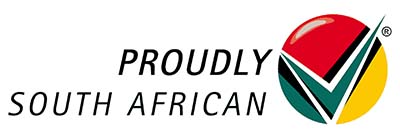Let’s dive into a topic that’s crucial for keeping our operations running smoothly: maintenance best practices.
Whether you’re overseeing a fleet of vehicles, managing machinery in a factory, or maintaining infrastructure, effective maintenance can make all the difference in asset performance.
In this blog post, we’ll explore some key strategies to help you get the most out of your assets.
Key Facts
- Maintenance is essential for optimal asset performance.
- Understanding different types of maintenance is crucial: preventive, predictive, and proactive.
- Key factors influencing asset performance include maintenance practices, environmental and operating conditions, asset quality, and human factors.
- Best practices include proactive planning, data-driven decisions, prioritized tasks, standardized procedures, skilled workforce, maintenance tracking, and continuous improvement.
- Common challenges in asset maintenance include inefficient asset tracking, reactive maintenance, lack of data, skilled labor shortage, inventory management issues, and budget constraints.
- Overall, proactive maintenance is vital for maximizing asset performance, driving productivity, and ensuring profitability.
Understanding Asset Maintenance
Before we delve into the nitty-gritty of maintenance best practices, let’s get on the same page about what maintenance actually entails.
Maintenance isn’t just about fixing things when they break – it’s a proactive approach to keeping assets in optimal condition.
There are different types of maintenance, including preventive (scheduled maintenance to prevent breakdowns), predictive (using data to predict when maintenance is needed), and proactive (taking preemptive action to address potential issues).
Each plays a vital role in ensuring asset reliability and longevity.
Key Factors Influencing Asset Performance
There are several key factors that can influence the performance of an asset. Here’s a quick rundown:
- Maintenance Practices: Regular maintenance is essential for keeping assets in good condition and preventing breakdowns. This can include preventive maintenance tasks like lubrication, cleaning, and adjustments, as well as corrective maintenance to address any problems that arise.
- Environmental Conditions: The environment in which an asset is used can have a big impact on its performance. For example, extreme temperatures, humidity, vibration, and dust can all lead to wear and tear on an asset.
- Operating Conditions: The way an asset is operated can also affect its performance. For instance, overloading an asset or using it outside of its design specifications can lead to premature failure.
- Asset Quality: The quality of the asset itself will also play a role in its performance. Well-designed and well-built assets are naturally going to perform better than poorly designed or poorly manufactured ones.
- Human Factors: The people who operate and maintain assets can also have a significant impact on their performance. Proper training and good work practices are essential for ensuring that assets are used and maintained correctly.
By understanding these key factors, organizations can develop strategies to improve asset performance and maximize the return on their investment.
Maintenance Best Practices
Here are some key maintenance best practices to keep in mind:
- Proactive planning: Focus on preventive maintenance with regular inspections, servicing, and scheduled replacements to prevent breakdowns .
- Data-driven decisions: Use data from inspections and maintenance history to identify trends and optimize maintenance tasks .
- Prioritized tasks: Categorize maintenance tasks based on urgency and potential impact to avoid neglecting critical equipment .
- Standardized procedures: Develop clear procedures for all maintenance tasks to ensure consistency and quality .
- Skilled workforce: Invest in training and certification for your maintenance staff to ensure they have the necessary skills .
- Maintenance tracking: Use a CMMS (Computerized Maintenance Management System) to track maintenance activities, inventory, and performance metrics .
- Continuous improvement: Regularly review and improve your maintenance practices based on experience and data analysis .
Challenges and Solutions in Asset Maintenance
Here are some of the common challenges faced in asset maintenance:
- Inefficient Asset Tracking: Difficulty in locating, monitoring, and maintaining a complete record of assets leads to wasted time, unnecessary replacements, and security risks.
- Reactive Maintenance: Reliance on fixing problems after they occur (reactive maintenance) results in downtime, higher repair costs, and potential safety hazards.
- Lack of Data and Information: Poor data collection and analysis make it difficult to predict maintenance needs, optimize schedules, and identify trends for improvement.
- Skilled Labor Shortage: Finding and retaining qualified maintenance personnel can be a challenge, impacting the quality and efficiency of maintenance tasks.
- Inventory Management: Difficulties in maintaining optimal spare parts inventory levels can lead to delays in repairs due to stockouts or unnecessary costs from overstocking.
- Budget Constraints: Balancing maintenance needs with budgetary limitations can be a constant struggle, leading to deferred maintenance and potential future problems.
Conclusion
In conclusion, maintenance isn’t just a necessary evil – it’s a strategic imperative for maximizing asset performance.
By following the best practices outlined in this blog post and taking a proactive approach to maintenance, you can ensure that your assets operate at peak performance levels, driving productivity and profitability for your organization.
So, roll up your sleeves, get out there, and start optimizing your maintenance efforts today!








